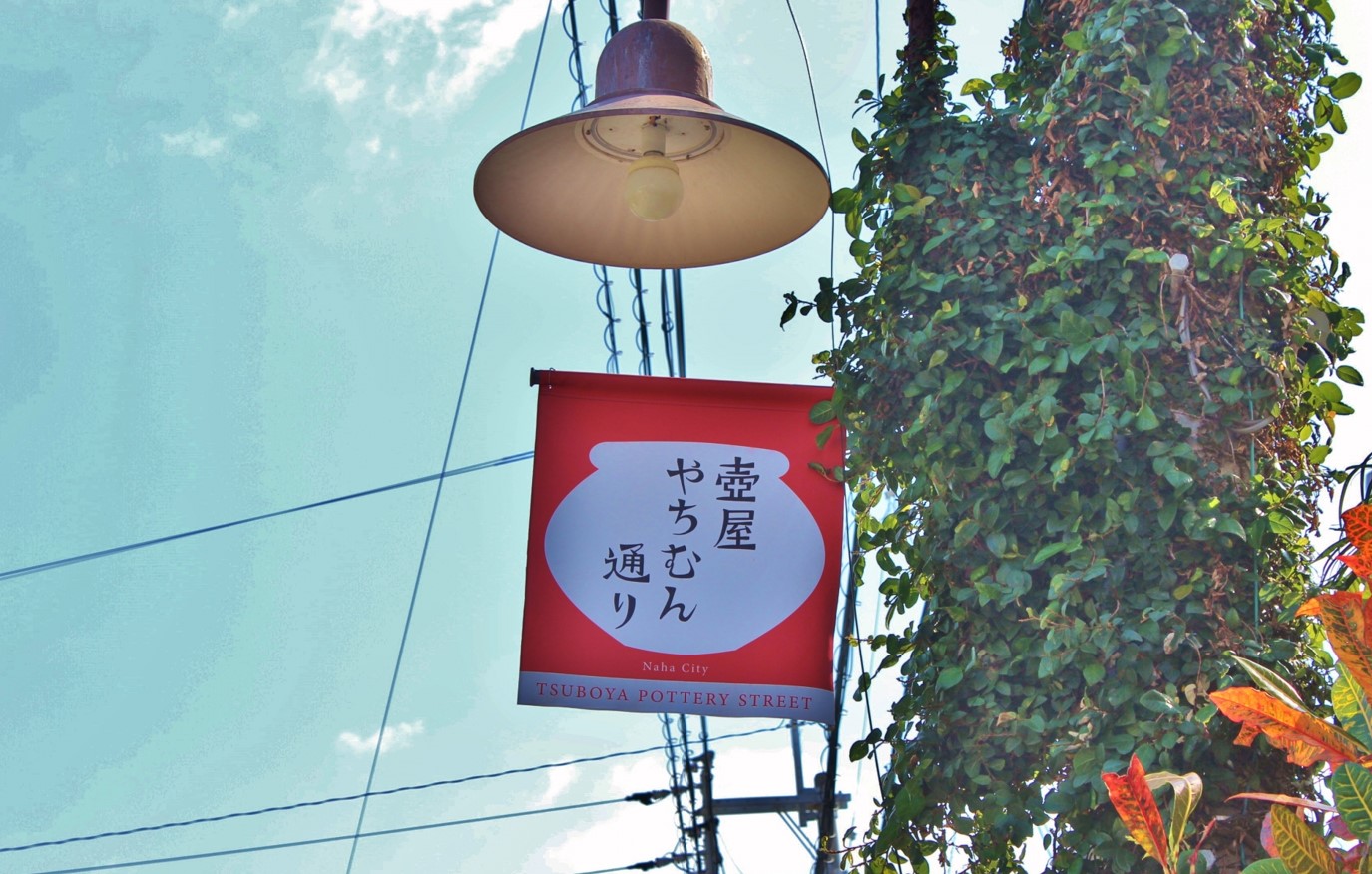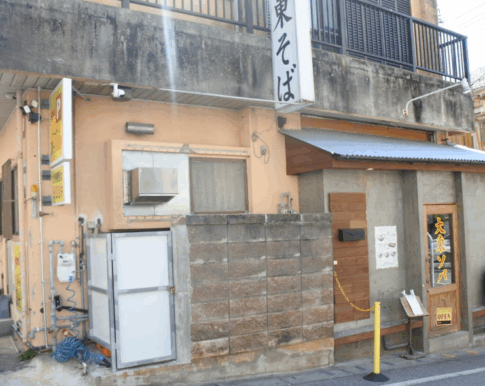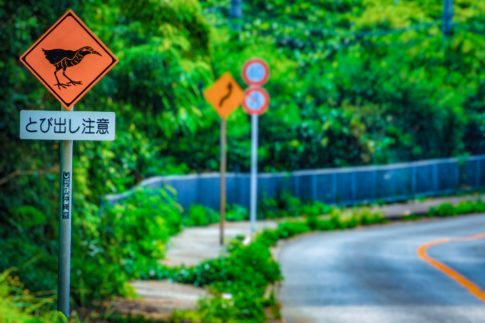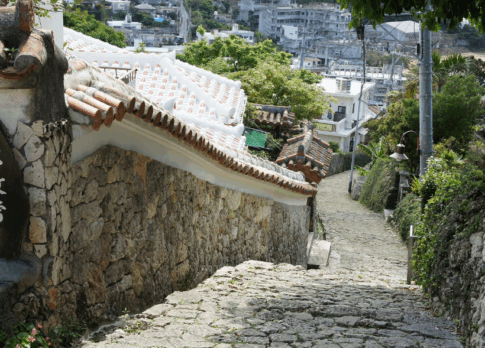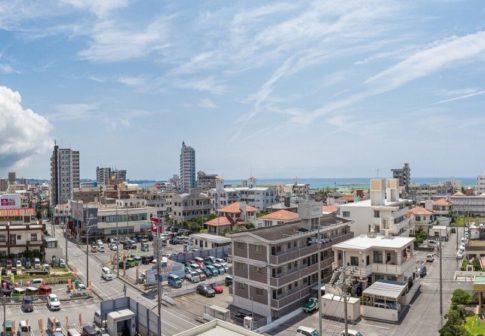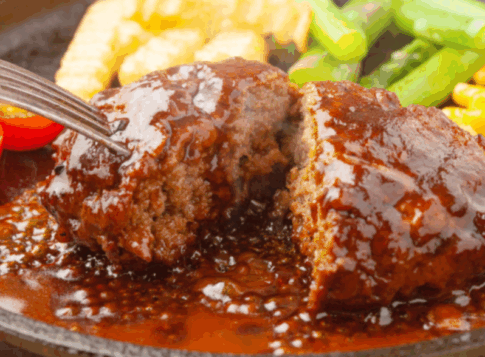Many people associate Okinawa with Okinawan glass. But pottery (yachimun) is also famous and has many fans. But they are expensive. Stores that pay attention to interior design and decorations to appeal to young people tend to be especially expensive. In this respect, the Tsuboya Pottery Hall, located at the end of Naha’s Yachimun Street, is a good place to find your favorite yachimun at a reasonable price!
Point 1: What is the origin of Okinawan “yachimun”?
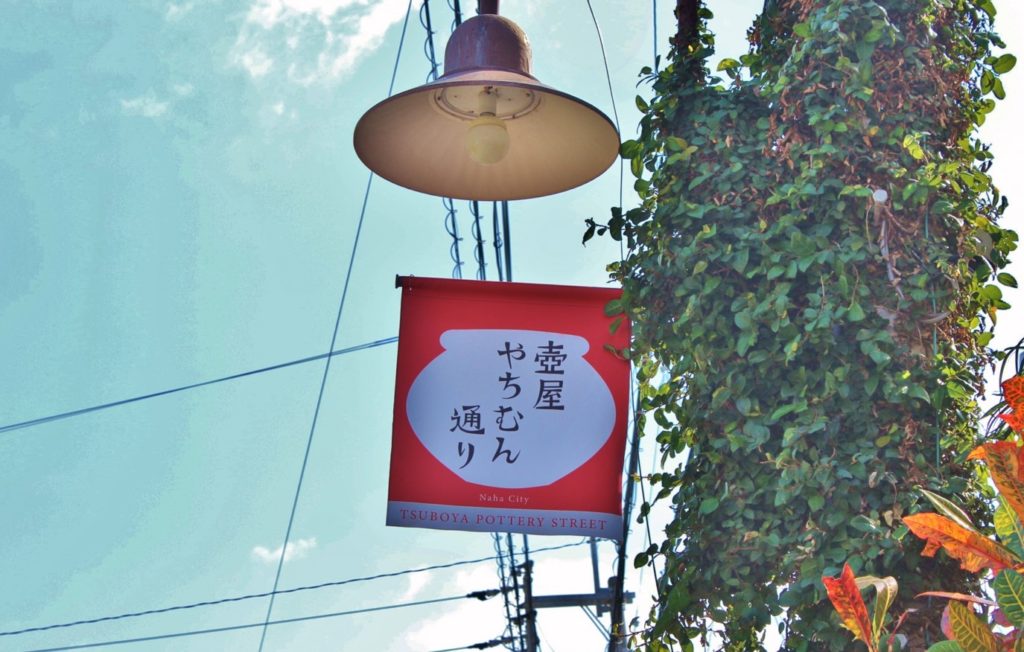
Do you think that Okinawan Yachimun (pottery) is more colorful or has more fancy patterns than that of mainland Japan?
The history of Okinawan Yachimun dates back to 400 years ago when it was still part of the Ryukyu Dynasty.
In the 1600s, Japan was still close to the outside world, but the Ryukyu Dynasty was actively trading with China and Thailand.
Ceramics were brought in from overseas and pottery techniques developed, which became the origin of Okinawa’s Yachimun.
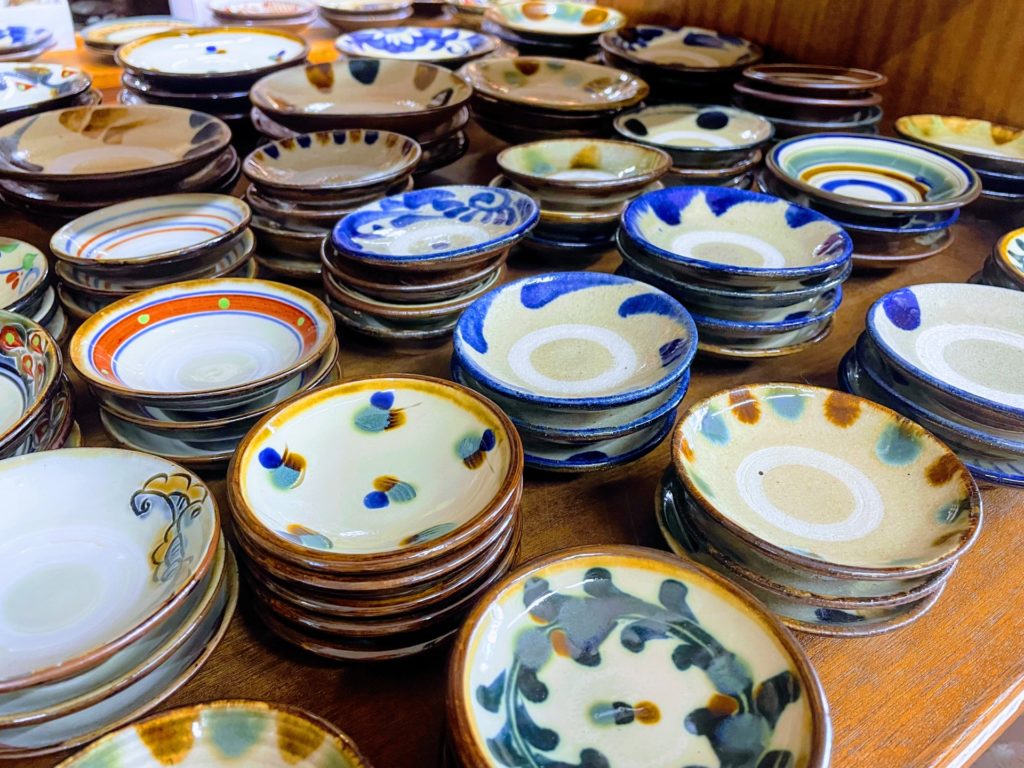
The use of primary colors such as red and blue in Yachimun patterns may have been influenced by foreign Yachimun.
In 1616, three Korean potters from the Satsuma clan visited Ryukyu for technical guidance and gathered potters scattered all over Okinawa to “Tsuboya” to promote the pottery industry.
The reason for this is that the location was close to both Shurijo Castle and Naha, and materials such as firewood and clay were easily procured.
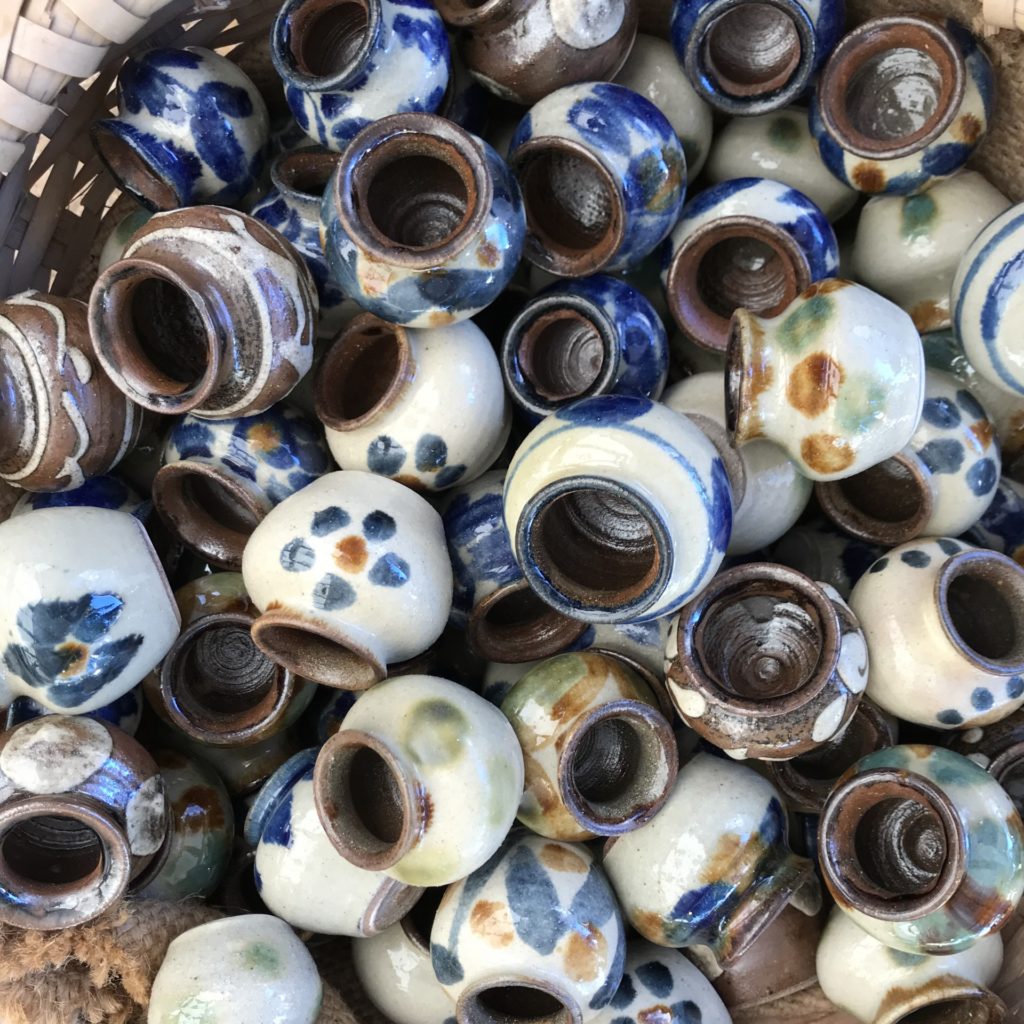
Tsuboya-yaki was in great demand during the Meiji and Taisho periods as “containers” for awamori and other alcoholic beverages, but after the abolition of feudal Japan, inexpensive Yachimun from outside the prefecture was introduced, and Tsuboya-yaki declined.
However, thanks to the efforts of local people, Tsuboya has made a comeback and is still famous as one of Okinawa’s representatives “Yachimun Town” along with Yomitan Village.
Point 2: If you want to buy Yachimun at a reasonable price in Yachimun Street!
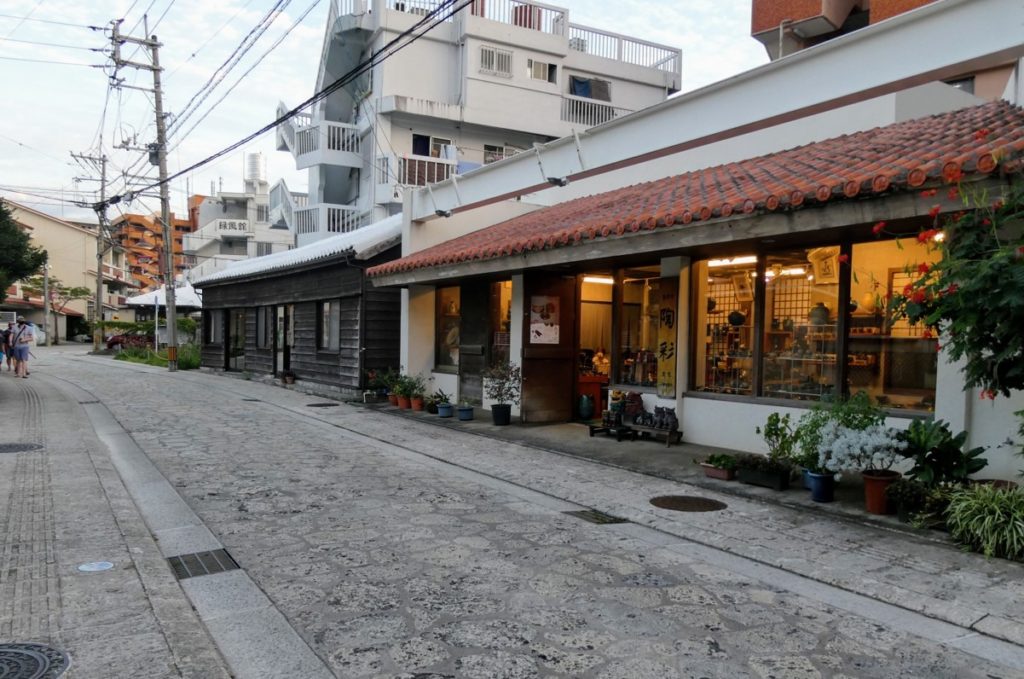
Yachimun Street in Tsuboya is currently lined with about 40 stores.
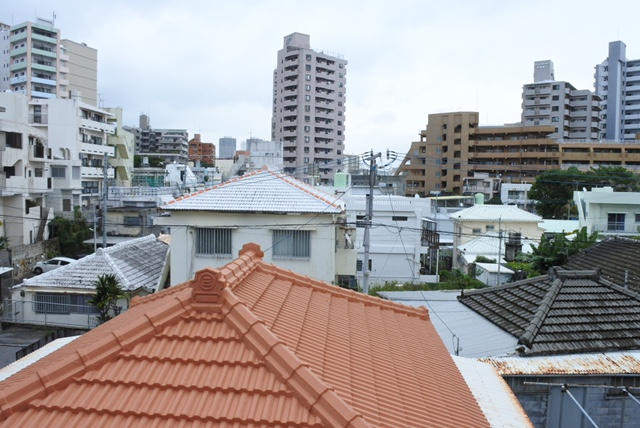
The 400-meter-long street is paved with Ryukyu limestone and has a laid-back atmosphere, unlike the nearby Kokusai-dori in Naha. It is here that red brick-roofed Okinawan houses can be seen mixed in with the skyscrapers.
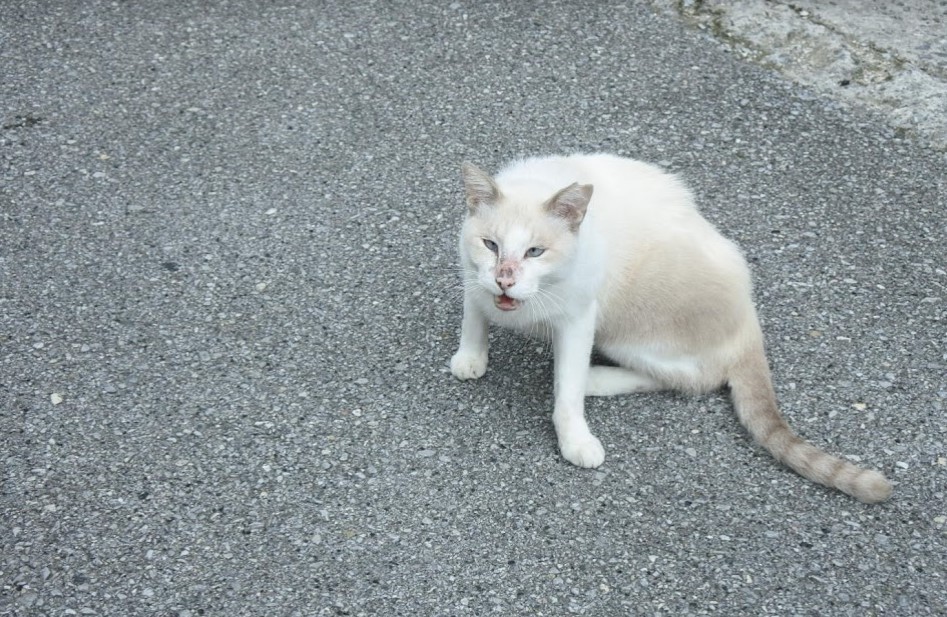
It takes about 12 or 3 minutes to walk from Kokusai-dori Avenue, but even on the way, you can enjoy the changing scenery as you pass through shopping streets and private residences. I saw quite a few stray cats yawning peacefully (laugh).
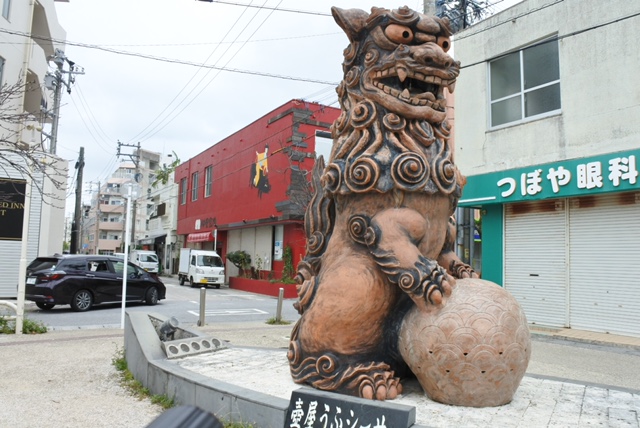
The Tsuboya Pottery Center is located at the entrance to Tsuboya Yachimun Street, which is easily recognizable because the limestone road “Yachimun Street” is just beyond it.

With 40 yachimun stores, it may be difficult to know where to buy yachimun, but the Tsuboya Pottery Hall, located at the far end of the Yachimun Street, offers standard designs and is reasonably priced.
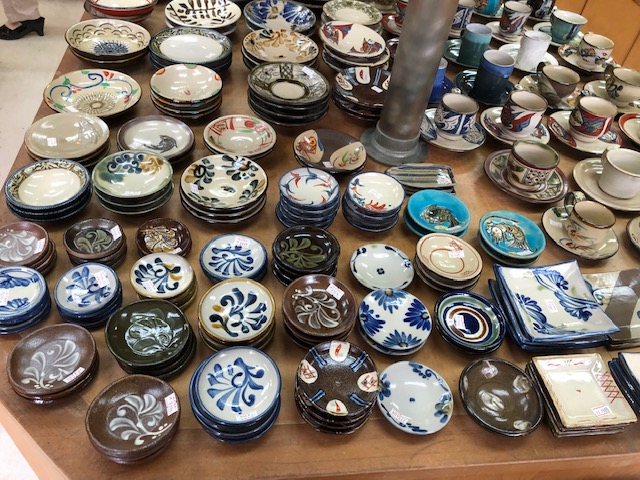
Here, there were mainly plates, cups, and other tableware of various sizes, as well as small plates that would make good souvenirs.
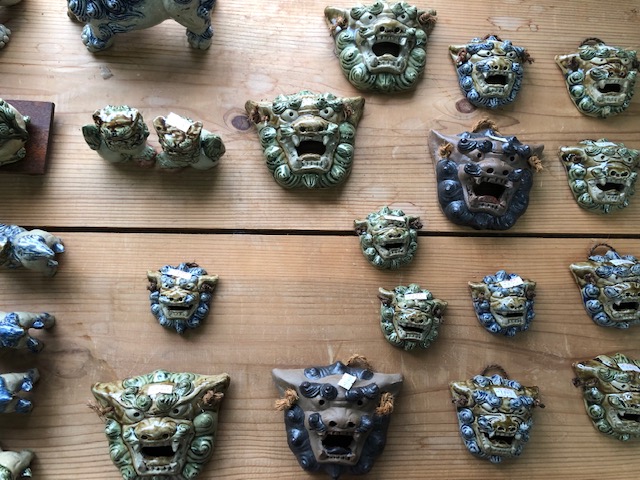
Although there are many comical items, realistic Shisa masks and other items are sold here, and I thought it was the most reasonable and well-stocked of the various stores I looked around. A shisa (small) was about 750 yen.
Nowadays, young sensibilities have entered the world of yachimun, and there are many stores that look like select stores, but this Tsuboya Pottery Hall can be said to have a somewhat more traditional style.

The plate I bought was chunky, weighed about 500 grams, and was painted with dayago flowers. If you look closely, you can see that there are some snoring parts, which is indescribably tasty!
The price was about 2,500 yen, but I was able to use a coupon for “National Travel Assistance” at the time, so I was able to get it for a good price.
Point 3: Once-a-year fun! What is the Tsuboya Yachimun Festival?
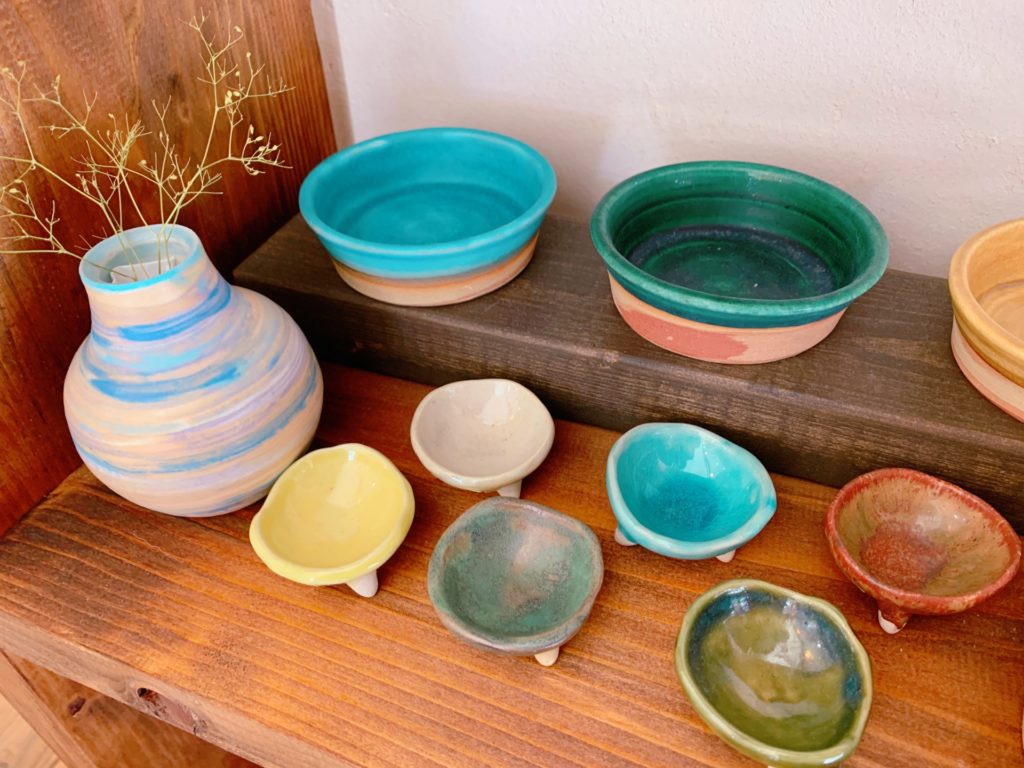
In 2022, the Tsuboya Yachimun Festival will be held on November 5 and 6 for the first time in three years. This so-called “pottery festival” will feature a 20% discount on products at all stores, as well as live sanshin (Okinawan traditional three-stringed instrument) performances, eisa (traditional Japanese folk dance), and lucky draws.
Another big advantage of the festival is that visitors can tour the kiln studios, which are not usually open to the public.
Since this is the first time in three years that the event has been held at the new Corona, we are sure that the effort put into the event will be different.
The Tsuboya Yachimun Festival is held every year on the Saturday and Sunday of the first week of November, so if you like Yachimun, it is recommended to come offshore on that day!

